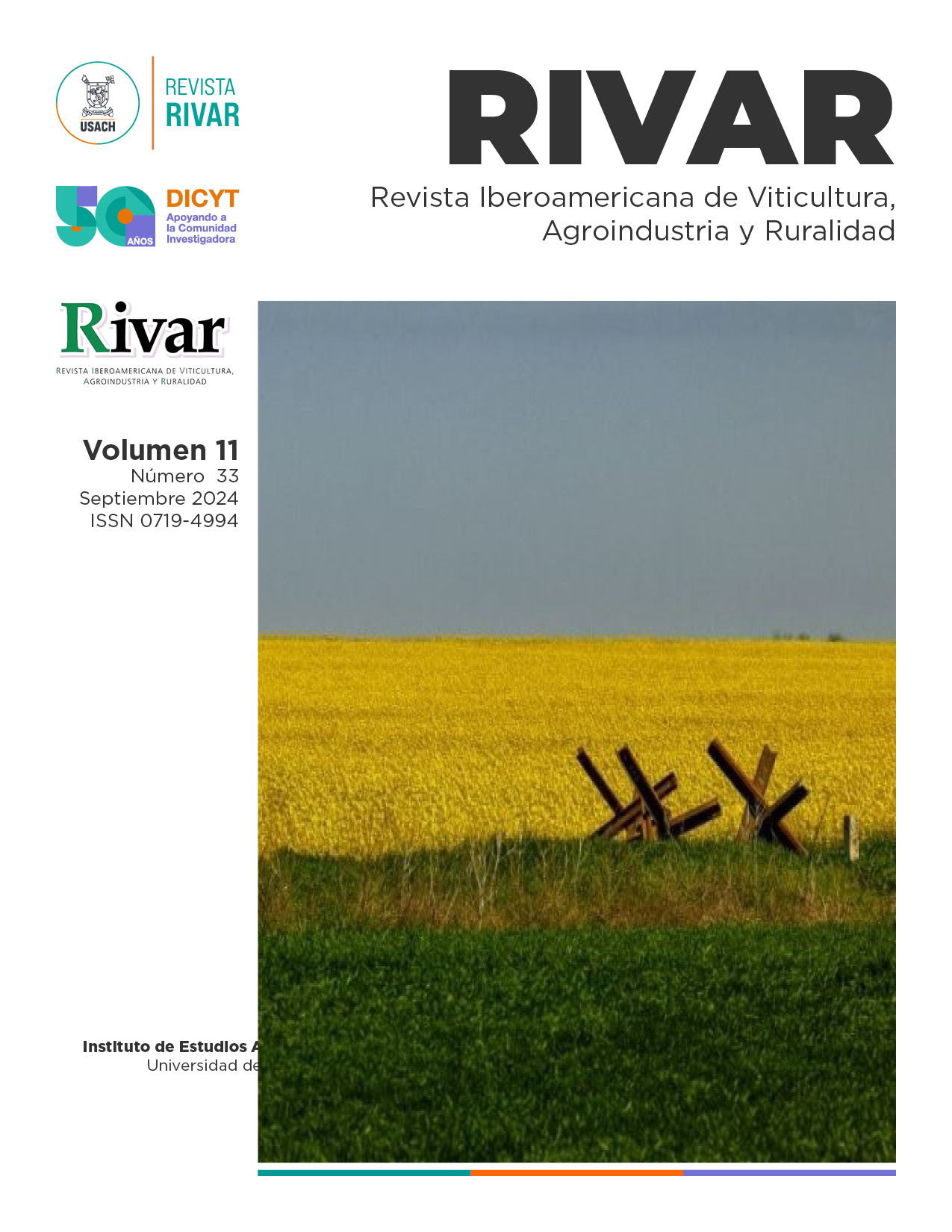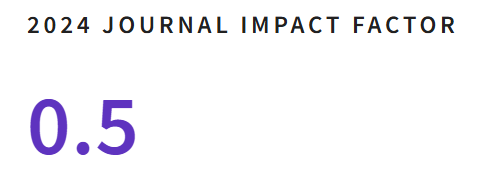Estudo de eficiência técnica da indústria de cacau utilizando análise envolvente de dados
DOI:
https://doi.org/10.35588/rivar.v11i33.6257Resumo
O agronegócio do cacau processado está entrando em uma nova fase de negócios hipercompetitivos, onde todas as empresas se concentram em tornar-se produtoras de baixo custo. O problema é complexo, com tendência à redução anual de unidades de negócio. Este estudo visa determinar quais unidades de toma de decisões (DMUs por sua sigla em inglês) possuem eficiência técnica para produzir produtos de cacau processados de forma sustentável. Para isso, usamos amostragem proposital para determinar locais de pesquisa, questionários e entrevistas para coletar dados e Análise Envoltória de Dados (DEA) para analisar os dados. Os resultados do estudo mostram que todos os DEAs produzem diferentes percentuais de eficiência técnica, por isso são classificados em três tipos: alto, médio e baixo. A distribuição de pontuação mostra trinta DMUs eficientes e sete DMUs ineficientes. Para alcançar a eficiência operacional e a estabilidade da DMU, é preciso melhorar a alocação de insumos de matéria-prima do cacau, os custos trabalhistas e insumos de capital industrial. A conclusão é que a eficiência industrial desempenha um papel vital na existência da DMU se puder prestar atenção à qualidade e quantidade da produção numa escala de eficiência ótima, e assim puder satisfazer a procura interna e de exportação para a tornar competitiva nos mercados globais.
Downloads
Referências
Amankwah-Amoah, J., Debrah, Y.A., and Nuertey, D. (2018). Institutional Legitimacy, Cross-Border Trade and Institutional Voids: Insights from the Cocoa Industry in Ghana. Journal of Rural Studies, 58, 136-145. https://doi.org/10.1016/j.jrurstud.2018.01.002
Arbelo, A., Arbelo-Perez, M., and Perez-Gomez, P. (2020). Profit Efficiency as a Measure of Performance and Frontier Models: A Resource-Based View. BRQ Business Research Quarterly, 24(2), 143-159. https://doi.org/10.1177/2340944420924336
Asmara, R., Fahriyah, F., and Hanani, N. (2017). Technical, Cost and Allocative Efficiency of Rice, Corn and Soybean Farming in Indonesia: Data Envelopment Analysis Approach. Agricultural Socio-Economics Journal, 17(2), 76-80. https://doi.org/10.21776/ub.agrise.2017.017.2.4
Asmara, R. and Hanani, N. (2017). Pendekatan Stochasticfrontieranalysis (Sfa) Dan Dataenvelopmentanalysis(Dea): Sebuah Komparasi Metode Pengukuran Efisiensi. Seminar Nasional Pembangunnan Pertanian II, 1, 123-127.
Attipoe, S.G., Jianmin, C., Opoku-Kwanowaa, Y., and Ohene-Sefa, F. (2020). The Determinants of Technical Efficiency of Cocoa Production in Ghana: An Analysis of the Role of Rural and Community Banks. Sustainable Production and Consumption, 23, 11-20. https://doi.org/10.1016/j.spc.2020.04.001
Augusty, F. (2006). Metode Penelitian Manajemen. Badan Penerbit Universitas Diponegoro.
Bellouma, M. (2011). Effects of Capital Investment on Working Capital Management: Evidence on Tunisian Export Small and Medium Enterprises (SMEs). African Journal of Business Management, 5(30), 12133-12137.
Chaney, T. (2016). Liquidity Constrained Exporters. Journal of Economic Dynamics and Control, 72, 141-159. https://doi.org/10.1016/j.jedc.2016.03.010
Coelli, T.J., Rao, D.S.P., O’Donnel, C.J., and Battese, G.E. (2005). An Introduction To Efficiency and Productivity Analysis Springer. Springer Science+Business Media.
Florez, R., Ramón, J.M., Vélez, M., Álvarez-Dardet, M.C., Araújo, P., and Sánchez, J.M. (2012). The Role of Management Control Systems on Inter-organisational Efficiency: An Analysis of Export Performance. Performance Measurement and Management Control: Global Issues, 25, 195-222. https://doi.org/10.1108/S1479-3512(2012)0000025011
Goyal, J., Singh, R., Kaur, H., and Singh, K. (2018). Intra-industry Efficiency Analysis of Indian Textile Industry: A Meta-frontier DEA Approach. International Journal of Law and Management, 60(6), 1448-1469. https://doi.org/10.1108/IJLMA-05-2017-0108
Habib, A. and Huang, H. (2018). Cost Stickiness in New Zelnd Charity Sector. The International Charity Sector, 54(3), 1950012. https://doi.org/10.1142/S1094406019500124
Harya, G.I., Sudiyarto, Budiwitjaksono, G.S., and Patiung, M. (2020). Competitiveness and Processing of Processed Cocoa Industry in Improving the Welfare of People’s Cocoa Farmers in East Java. In Nusantara Science and Technology Proceedings, 2019 (pp. 302-310). Subaraya, Indonesia. https://doi.org/10.11594/nstp.2019.0443
Hosseini, K. and Stefaniec, A. (2019). Efficiency Assessment of Iran’s Petroleum Refining Industry in the Presence of Unprofitable Output: A Dynamic Two-stage Slacks-based Measure. Energy, 189. DOI https://doi.org/10.1016/j.energy.2019.116112
Indah, P.N., Harya, G.I., Fatma, L., Pratiwi, L., and Widayanti, S. (2018). Analysis of Factors Influencing Processed Cocoa Industry in East Java Indonesia. Proceedings of the International Conference on Science and Technology (ICST 2018), 652-656.
DOI https://doi.org/10.2991/icst-18.2018.133
Indonesia-Investment (2022). Future Prospects of The Indonesian Cocoa Sector. Indonesia-Investment.
Mok, V., Yeung, G., Han, Z., and Li, Z. (2010). Export Orientation and Technical Efficiency: Clothing Firms in China. Managerial and Decision Economics, 31(7), 453-463. https://doi.org/10.1002/mde.1500
Moral-Pajares, E., Mozas-Moral, A., Bernal-Jurado, E., and Medina-Viruel, M.J. (2015). Efficiency and Exports: Evidence from Southern European Companies. Journal of Business Research, 68(7), 1506-1511. https://doi.org/10.1016/j.jbusres.2015.01.042
Patel, P.C., Ojha, D., anf Naskar, S. (2022). The Effect of Firm Efficiency on Firm Performance: Evidence from the Domestic Production Activities Deduction Act. International Journal of Production Economics, 253, 108596. https://doi.org/10.1016/j.ijpe.2022.108596
Permatasari, M.F. and Setyawan, A.A. (2019). Pengukuran Efisiensi Kinerja UMKM Menggunakan Metode Data Envelopment Analysis ( DEA ). Seminar Nasional & Call For Paper Seminar Bisnis Magister Manajemen (SAMBIS-2019) Membangun Ekonomi Kreatif Yang Berdaya Saing. 118-131.
Sadaf, M. and Ishaq, A. (2018). Prospects from Efficiency Analysis of Exporting and Non-Exporting Pakistani Firms. Policy Perspectives: The Journal of the Institute of Policy Studies, 15(2), 25-39. https://doi.org/10.13169/polipers.15.2.0025
Saputra, P.M.A. (2014). Technical Efficiency and Export Performance: Evidence for Self-selection Hypothesis from Indonesian Manufacturing Sector-level Data. International Journal of Economic Policy in Emerging Economies, 7(4), 383-398. https://doi.org/10.1504/IJEPEE.2014.066625
Seth, H., Chadha, S., and Sharma, S. (2020). Benchmarking the Efficiency Model for Working Capital Management: Data Envelopment Analysis Approach. International Journal of Productivity and Performance Management, 70(7), 1528-1560. https://doi.org/10.1108/IJPPM-10-2019-0484
Sriwana, I.K. (2013). Lean Proses untuk Peningkatan Kapasitas Industri Cacao Powder Menggunakan Value Stream Mapping. Jurnal Inovisi, 9(2), 39-47.
Sukardi, S. (2011). Formulasi Definisi Agroindustri dengan Pendekatan Backward Tracking. Jurnal Pangan, 20(3), 270.









